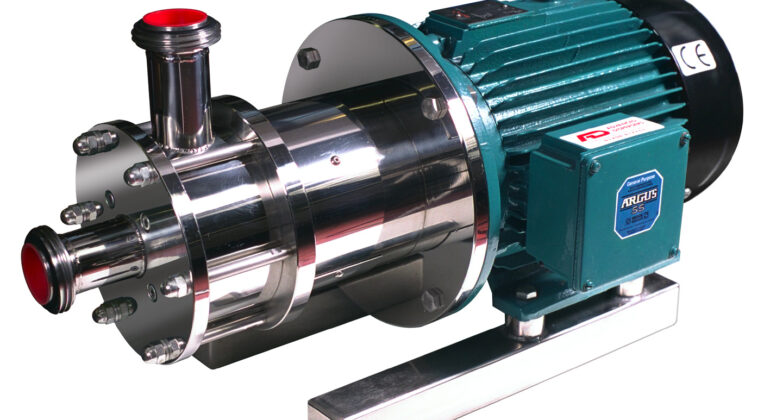Strengthening our Group. Supporting your growth
The DC Norris Group is pleased to announce the recent acquisition of AE Mixers, further strengthening its position as a global provider of high-performance processing solutions for the food, beverage, confectionery, and pet food industries.
This strategic acquisition builds on the Group’s earlier expansion, which saw Gilwood — specialists in stainless steel fabrication — join the Group. Together, these additions enhance the Group’s capabilities across a broader spectrum of the production journey: from initial factory planning and stainless steel fit-out, through to advanced cooking, mixing, cooling, and processing systems.
DC Norris and BCH have long been recognised for their world-leading food processing technologies. With the integration of Gilwood, the Group now offers a more complete service by supporting early-stage project planning and providing hygienic factory furniture, drainage systems, and bespoke stainless steel fabrication.
![High Shear Mixer]() The addition of AE Mixers brings further depth, with a range of precision mixing systems for food, beverage, chemical, and cosmetic applications — including high shear, low shear, and vacuum configurations for both batch and continuous processing.
The addition of AE Mixers brings further depth, with a range of precision mixing systems for food, beverage, chemical, and cosmetic applications — including high shear, low shear, and vacuum configurations for both batch and continuous processing.
These acquisitions reflect the Group’s long-term vision: to offer a comprehensive, end-to-end solution for food manufacturers — from concept and factory layout to final product delivery. By bringing together specialist expertise in engineering, fabrication, and automation, DC Norris Group is the go-to partner for complete food and confectionery manufacturing solutions worldwide.
“Our group-wide vision is simple: to empower manufacturers with the tools, technology, and expertise they need to build efficient, scalable, and high-performing processing operations,” said Annabel Norris, Director of Group Marketing at DC Norris.
“AE Mixers and Gilwood, alongside BCH, DCN North America and DC Norris, deliver the engineering and technical foundations that help bring ideas to life — from concept to high-quality finished product.”
More About the Group:
DC Norris Group comprises a network of specialist companies – including DC Norris, BCH, AE Mixers, Gilwood, and DC Norris North America – delivering best-in-class food and beverage processing systems to customers worldwide. With a focus on innovation, energy efficiency, and expert collaboration, the Group supports manufacturers across ready meals, beverages, sauces, soups, confectionery, wet pet food, and more.
DC Norris – Global Leaders in Cooking and Cooling Systems
With over 50 years of engineering innovation, DC Norris designs and manufactures advanced processing systems used globally in the production of ready meals, soups, sauces, beverages, and pet food. Innovations such as Jet Cook™ Technology, Braising Bar, and Cook-Chill Systems have helped manufacturers improve efficiency, product consistency, and energy performance.
DC Norris North America partners closely with customers across the United States — offering tailored support throughout the entire project lifecycle. Based in Michigan, the team provides sales, technical service, product development expertise and local manufacturing and assembly capabilities. This enables faster delivery times, responsive service, and solutions that are aligned with the specific needs of the North American market.
BCH – Food & Confectionery Processing Solutions
BCH offers systems for producing sauces, soups, ready meals, dips, dressings, jams and sweet savoury fillings using atmospheric, pressure and vacuum cooking methods, as well as vacuum cooling technology primarily for the food industry,
In the confectionery sector they provide cooking, cooling, forming and extrusion systems for the manufacture of liquorice, starch gels, caramels and 100% fruit.
AE Mixers – Precision Mixing Technology
AE Mixers specialises in high-performance mixers for food, chemical, and cosmetic sectors. Their equipment supports a wide range of processes — from emulsions and creams to sauces and pastes — with custom solutions available for demanding or sensitive applications.
Gilwood – Process Plant & Hygienic Food Factory Solutions
With over 60 years of fabrication expertise, Gilwood manufactures pressure vessels, storage tanks, and hygienic stainless steel equipment including kerbing, drainage, and factory furniture. All products are built in-house using state-of-the-art machinery to meet the strictest hygiene standards in food and pharmaceutical production.
For further information please contact – annabelnorris@dcnorris.com
The post DC Norris Group Expands with Acquisition of AE Mixers appeared first on DC Norris.






 The addition of AE Mixers brings further depth, with a range of precision mixing systems for food, beverage, chemical, and cosmetic applications — including high shear, low shear, and vacuum configurations for both batch and continuous processing.
The addition of AE Mixers brings further depth, with a range of precision mixing systems for food, beverage, chemical, and cosmetic applications — including high shear, low shear, and vacuum configurations for both batch and continuous processing.
 May 2025 marks a significant milestone for
May 2025 marks a significant milestone for  “I started this business with a belief in what we could bring to the North American food industry,” said Smith. “Ten years later, it’s been incredible to see that belief become a reality. I’m proud of the team we’ve built and the clients we’ve helped grow.”
“I started this business with a belief in what we could bring to the North American food industry,” said Smith. “Ten years later, it’s been incredible to see that belief become a reality. I’m proud of the team we’ve built and the clients we’ve helped grow.”


